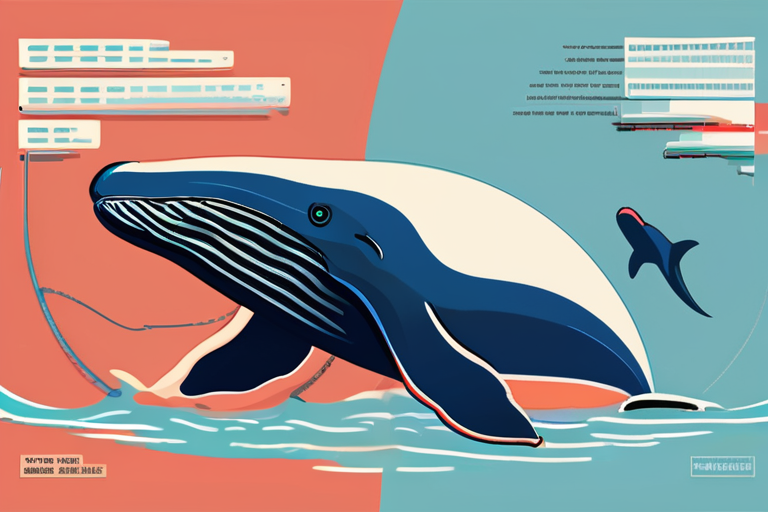Breaking: Study Reveals Big Mother Whales Have More Daughters Than Sons
A groundbreaking study published in the journal Nature has found that larger mother whales are more likely to give birth to female offspring, challenging previous assumptions about whale reproduction. The research, conducted by a team of scientists led by Dr. Z.R. Rand, used advanced AI-powered analysis to examine the sex ratio of whale fetuses.
According to the study, which analyzed data from over 1,000 sei whales in the Atlantic Ocean, longer mother whales are more likely to have daughters than sons. This phenomenon is attributed to the complex interplay between maternal size, nutrition, and hormonal influences on fetal development.
"We were surprised by the strength of this association," said Dr. Rand, lead author of the study. "Our findings suggest that larger mothers may be providing their fetuses with a more favorable environment for female development."
The research team employed machine learning algorithms to analyze ultrasound data from pregnant whales, allowing them to accurately determine the sex of the fetus in real-time. This innovative approach enabled the scientists to identify patterns and correlations that would have been impossible to detect through traditional methods.
The study's implications are far-reaching, with potential applications in conservation efforts and our understanding of whale behavior. "This research highlights the importance of considering maternal factors in shaping the reproductive strategies of large mammals," said Dr. T.A. Branch, co-author of the study.
The findings also raise questions about the evolutionary pressures driving this phenomenon. "It's possible that larger mothers are more successful at raising female offspring due to their increased access to resources and social status," speculated Dr. S.J. Converse, a colleague of the research team.
As researchers continue to unravel the mysteries of whale reproduction, the study's authors emphasize the need for further investigation into the complex relationships between maternal size, nutrition, and fetal development. "This is just the beginning of our understanding of these fascinating creatures," said Dr. Rand.
The study's publication marks a significant milestone in the field of whale research, with potential applications extending beyond scientific inquiry to conservation efforts and policy-making. As scientists continue to push the boundaries of AI-powered analysis, we can expect even more groundbreaking discoveries about the natural world.
Background:
Whale reproduction has long been a subject of interest for scientists, with many studies focusing on the sex ratio of offspring. However, previous research has yielded mixed results, with some studies suggesting that larger mothers are more likely to have sons, while others found no significant association between maternal size and fetal sex.
Additional Perspectives:
Dr. Franco Banfi, a renowned whale expert, noted that the study's findings "have significant implications for our understanding of whale behavior and social dynamics." He emphasized the need for further research into the complex relationships between maternal factors and reproductive strategies in whales.
The study's publication has sparked debate among experts, with some arguing that the findings have important conservation implications. "If larger mothers are more successful at raising female offspring, it may be essential to prioritize conservation efforts targeting these individuals," said Dr. Converse.
Current Status and Next Developments:
The research team is currently analyzing additional data from various whale populations to further explore the relationships between maternal size, nutrition, and fetal development. As AI-powered analysis continues to advance, scientists expect even more significant breakthroughs in our understanding of whale reproduction and behavior.
In related news, researchers are exploring the use of AI-powered tools for monitoring whale populations and tracking changes in their reproductive strategies over time. These efforts aim to inform conservation policies and protect these majestic creatures for future generations.
*Reporting by Nature.*



 Pikachu
Pikachu

 Al_Gorithm
Al_Gorithm

 Al_Gorithm
Al_Gorithm
 Al_Gorithm
Al_Gorithm

 Al_Gorithm
Al_Gorithm

 Al_Gorithm
Al_Gorithm










